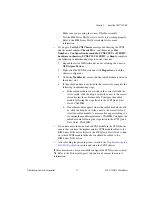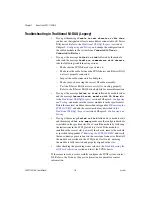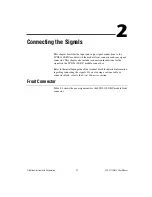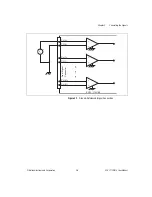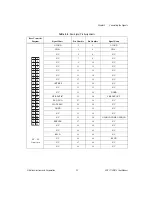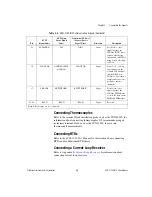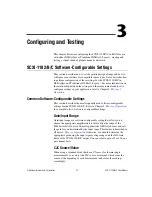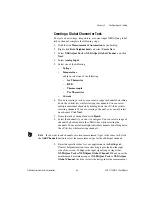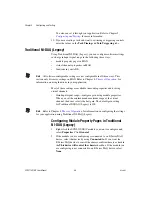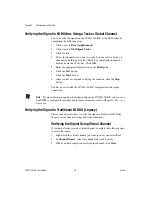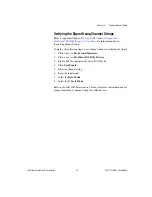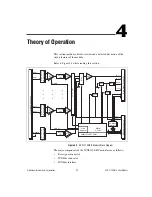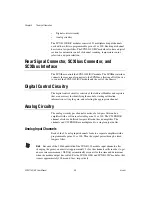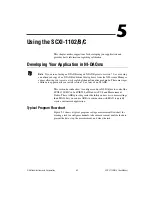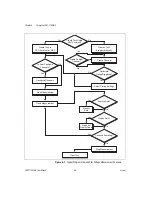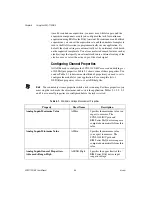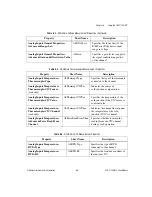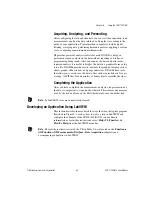
Chapter 3
Configuring and Testing
3-4
ni.com
You also can set it through your application. Refer to Chapter 3,
, for more information.
10. If you are creating a task and want to set timing or triggering controls,
enter the values in the
Task Timing
and
Task Triggering
tabs.
Traditional NI-DAQ (Legacy)
Using Traditional NI-DAQ (Legacy), you can configure software settings,
such as gain/input signal range in the following three ways:
•
module property pages in MAX
•
virtual channels properties in MAX
•
functions in your ADE
Note
All software-configurable settings are not configurable in all three ways. This
section only discusses settings in MAX. Refer to Chapter 4,
information on using functions in your application.
Most of these settings are available in module properties and/or using
virtual channels:
•
Gain/input signal range—configure gain using module properties.
When you set the minimum and maximum range of the virtual
channel, the driver selects the best gain. The default gain setting
for Traditional NI-DAQ (Legacy) is 100.
Note
Refer to Chapter 4,
, for information on configuring the settings
for your application using Traditional NI-DAQ (Legacy).
Configuring Module Property Pages in Traditional
NI-DAQ (Legacy)
1.
Right-click the SCXI-1102/B/C module you want to configure and
select
Properties
. Click
General
.
2.
If the module you are configuring is connected to an E Series DAQ
device, select that device by using
Connected to
. If you want the
E Series DAQ device to control the chassis, confirm there is a check in
the
This device will control the chassis
checkbox. If the module you
are configuring is not connected to an E Series DAQ device, select
None
.

